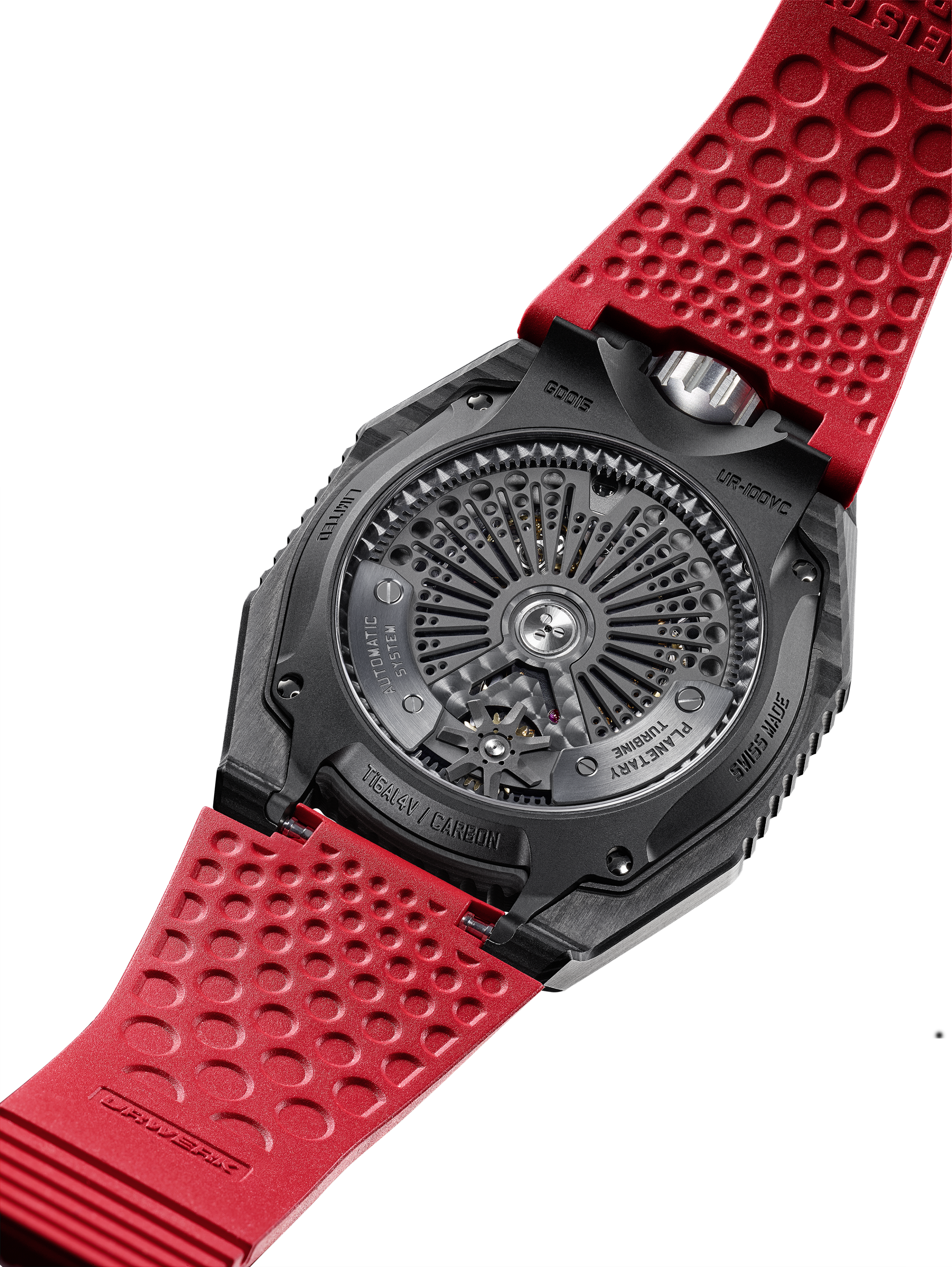BY HARLAN CHAPMAN-GREEN
Lots of people from all walks of life with all interests when talking about old things like to crack out the old “they don’t make ’em like they used to” chestnut. I understand why, but I’ll bet the generations before them said exactly the same thing as they fondly remembered the times of horsedrawn carriages or good old-fashioned scurvy, times that real “proper” people came from. Personally, I’m glad that these times happened and I get to read about them, but I’m more glad I’m around today with the likes of high-definition TV, modern cars which do everything for you and crazy high-end wristwatches from Urwerk and the like.
In fact, Urwerk is the subject of today’s piece as they have just released their newest creation, the UR-100V LightSpeed” If there’s one genre of media that has most obviously affected Urwerk it’s science fiction. Despite my rambling earlier which somewhat implies that all things great and good are modern, science fiction has been around for over three centuries, and the wandering hours display that Urwerk is famous for using has been around for four centuries. Yet, this piece looks entirely modern.


Curiously, Urwerk has included a display of the various planets with a number beside them; the display itself doesn’t move, but it’s cool to put on the watch nonetheless. As you’ll undoubtedly remember from science class in school, the speed of light is 299,792.458 kilometres per second (1,079,252,848.8 (1.08bn) kilometres per hour, or 670,616,629 (671m) miles per hour if you prefer), represented by the letter c. Each number is the time it takes for light to reach said planet from the sun in minutes or hours:
- Mercury – 3.2 minutes
- Venus – 6 minutes
- Earth – 8.3 minutes
- Mars – 12.6 minutes
- Jupiter – 43.2 minutes
- Saturn – 79.3 minutes
- Uranus – 159.6 minutes
- Neptune – 4.1 hours
The key to understanding the Urwerk’s display is to remove all thoughts about the analogue time as we’re used to seeing it. Viewing the minutes involves the minutes track at the bottom of the dial while an arrow display slowly moves past it. On the top of each hour display is a number; the number indicates the current hour, and each disk spins as it orbits, so the watch can use three disks to display twelve hours.
To make the display work the in-house calibre UR12.02 has been used. It has 40 jewels, a 48-hour power reserve and a 4Hz beat rate. Urwerk has used some interesting materials in its construction, presumably to make it as efficient as possible. These include an aluminium carrousel onto which beryllium-bronze crosses have been added, the hour disks are made of aluminium, too. The base plates of the movement are made of something called an ARCAP alloy; when I Googled this, it said there were multiple types of ARCAP alloy, and Urwerk hasn’t specified which one, but they’re all non-magnetic as they don’t contain iron. The rotor is made of aluminium and has been PVD-treated, and the movement is sat inside a watertight titanium container.
All of this is wrapped in a black carbon case, which has a Grade 5 titanium caseband and dimensions of 43mm x 51.73mm x 14.55mm, water resistance is 50m and the case comes on a textured red rubber strap with a blackened folding clasp attached. Although Urwerk hasn’t said precisely how many will be made, the complexity of the watch means they won’t be flying out of the factory, and even if they did they’re still expensive at CHF65,000 before taxes.
I like this watch, as I seem to like most releases these days. It’s hard not to be inspired by an Urwerk piece. Even if this is one of their more “basic” watches if there is such a thing, it still stands out because its baseline level of craziness is way higher than most brands would dream of.






